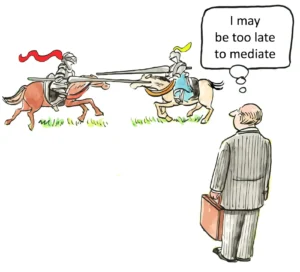Theft Charge Consequences: Felony vs. Misdemeanor Penalties Explained
Understanding the distinction between felony theft and misdemeanor theft charges is crucial for anyone facing allegations of property crimes in the American legal system. The classification of theft offenses significantly impacts not only the immediate legal penalties but also long-term consequences that can affect employment opportunities, housing options, and civil rights. The difference between these classifications often hinges on several factors, with the value of stolen property being the primary determinant in most jurisdictions. As theft-related crimes continue to evolve in 2025, comprehending these distinctions has never been more important for those navigating the criminal justice system.
Defining Theft Under American Law
Theft, in its most basic legal definition, involves the unlawful taking of another person’s property with the intent to permanently deprive the owner of that property. This seemingly straightforward concept encompasses a wide range of criminal behaviors across various jurisdictions in the United States.
The legal concept of theft has evolved significantly throughout American jurisprudence. Historically, common law recognized distinct offenses such as larceny (taking personal property), embezzlement (misappropriation by someone in a position of trust), and false pretenses (obtaining property through deception). Modern statutory law has largely consolidated these offenses under the broader umbrella of theft, though some jurisdictions maintain separate classifications for specific forms of theft-related crimes.
Each state defines theft somewhat differently, but all share common elements: the taking of property belonging to another, without consent, with the intent to deprive the owner of that property. The mental state requirement—the intent to steal—distinguishes theft from accidental taking or situations where someone genuinely believes they have a right to the property. This intent element is crucial in criminal defense strategies and often becomes a central focus in theft prosecutions.
The Value Threshold: Where Misdemeanor Becomes Felony
The most significant factor determining whether a theft charge will be classified as a misdemeanor or felony is the value of the stolen property. This threshold varies considerably from state to state, creating a patchwork of laws across the country that can dramatically affect the consequences of identical actions in different jurisdictions.
As of 2025, state thresholds for felony theft range from as low as $200 in New Jersey to as high as $2,500 in Texas and Wisconsin. The majority of states set their felony threshold between $1,000 and $1,500. This disparity means that stealing an item worth $1,000 could result in a misdemeanor charge in Texas but a felony charge in California, where the threshold is $950. These differences reflect varying state philosophies on crime and punishment, with some states taking a more punitive approach while others have raised thresholds in response to prison overcrowding and changing attitudes toward criminal justice.
The value determination itself can become a contested issue in theft cases. Questions may arise about how to assess the value of used items, damaged property, or items with sentimental but limited market value. In retail theft cases, prosecutors typically use the retail price, while defense attorneys may argue for wholesale value or depreciated value. This valuation dispute can be the difference between facing a misdemeanor with minimal jail time or a felony with years of potential imprisonment.
Misdemeanor Theft Penalties
Misdemeanor theft, often called petty theft or petit larceny in many jurisdictions, represents the less severe category of theft offenses. While still serious, these charges carry significantly lighter penalties than their felony counterparts.
The typical penalties for misdemeanor theft include incarceration in county jail (not state prison) for a maximum of one year. Many first-time offenders receive sentences well below the maximum, with some serving no jail time at all if granted probation. Fines for misdemeanor theft generally range from $500 to $1,000, though some states permit fines up to several thousand dollars. Courts may also order restitution to the victim, requiring the defendant to repay the value of stolen items or damages caused during the theft.
Beyond these direct penalties, misdemeanor theft convictions can trigger collateral consequences. These may include difficulty obtaining employment, especially in positions involving financial responsibility or handling cash. Certain professional licenses may be affected, and rental applications might be rejected based on a theft conviction. However, these consequences are generally less severe and more temporary than those associated with felony convictions. Many states also offer diversion programs or record sealing options for first-time misdemeanor theft offenders, providing a path to eventually move beyond the mistake.
Felony Theft Penalties
When theft charges cross the value threshold into felony territory, the consequences increase dramatically in severity and longevity. Felony theft, often called grand theft or grand larceny, represents a significant escalation in the eyes of the law.
Incarceration for felony theft typically occurs in state prison rather than county jail, with potential sentences ranging from one year to decades depending on the severity of the offense and the defendant’s criminal history. In many states, felony theft is further categorized into degrees or classes, with higher degrees carrying longer potential sentences. For example, in New York, fourth-degree grand larceny (the lowest level) carries up to four years in prison, while first-degree grand larceny can result in up to 25 years of incarceration. Financial penalties for felony theft are substantially higher than for misdemeanors, often reaching $10,000 or more for serious cases. Courts routinely order restitution to victims in addition to these fines.
The collateral consequences of felony theft convictions extend far beyond the formal legal penalties. Convicted felons face significant barriers to employment, with many jobs explicitly excluding applicants with felony records. Housing options become limited, as many landlords conduct background checks and reject applicants with felony convictions. Perhaps most significantly, felony convictions result in the loss of certain civil rights, including the right to vote in many states, the right to own firearms, the right to serve on juries, and eligibility for certain government benefits. These consequences can last a lifetime, though some states have restoration of rights processes available after completing the sentence and maintaining a clean record for a specified period.
Factors That Can Elevate Theft Charges
While the value of stolen property serves as the primary determinant in classifying theft offenses, several other factors can elevate misdemeanor theft to felony status regardless of value, or increase the severity of an already felony-level offense.
The location of the theft can significantly impact charging decisions. Thefts from certain protected places—such as places of worship, government buildings, construction sites, or areas affected by natural disasters or emergencies—may automatically be charged as felonies in many jurisdictions. Similarly, stealing directly from a person (such as pickpocketing) rather than taking unattended property often results in elevated charges due to the increased potential for confrontation and violence.
The type of property stolen can also trigger enhanced penalties. Theft of certain items carries automatic felony classification in many states regardless of value. These items typically include firearms, vehicles, controlled substances, livestock, and certain agricultural products. The rationale varies by item—firearms pose public safety concerns, vehicle theft causes significant hardship, and agricultural theft can threaten livelihoods and food security.
A defendant’s criminal history plays a crucial role in how theft charges are classified and punished. Many states have “habitual offender” or “three strikes” laws that significantly enhance penalties for repeat offenders. Under these provisions, even a relatively minor theft might be charged as a felony if the defendant has prior theft convictions. Some jurisdictions specifically enhance penalties for repeat retail theft offenders, reflecting concerns about professional shoplifting and organized retail crime rings that have gained increasing attention in 2025.
Organized Retail Crime and Theft Aggregation
Organized retail crime has emerged as a significant concern for retailers and law enforcement in 2025, leading to legislative changes that affect how theft charges are classified and prosecuted. This sophisticated form of theft involves coordinated groups that systematically target retail establishments to steal merchandise for resale.
One notable trend in addressing organized retail theft is the implementation of aggregation laws. These provisions allow prosecutors to combine the value of items stolen in separate incidents to reach felony thresholds. For example, California’s new law for 2025 permits aggregation of the value of property stolen from different victims or in different counties to reach the $950 felony threshold. This change directly targets professional thieves who deliberately keep individual thefts below the felony threshold by hitting multiple stores or jurisdictions. Similar provisions have been adopted in other states as retailers report increasing losses from coordinated theft operations.
The rise of online marketplaces has created new challenges in combating organized retail theft, as stolen merchandise can be quickly sold through various platforms. In response, some states have implemented stricter oversight of websites where stolen goods are commonly sold, requiring more thorough verification of sellers and record-keeping for high-volume merchants. These measures aim to disrupt the profitable resale market that drives much organized retail crime. The retail industry continues to advocate for federal legislation to address organized retail crime, with the National Retail Federation reporting that almost all loss prevention and security executives surveyed agree that federal action is needed to effectively combat these sophisticated theft operations.
Theft in the Workplace: Employee Theft Consequences
Employee theft represents a distinct category of theft offenses with unique considerations in both charging decisions and penalties. As workplace theft continues to rise in 2025, with losses approaching $50 billion annually in the United States, understanding the specific consequences of these violations becomes increasingly important.
The legal consequences of employee theft often depend on the employer’s approach as much as the value stolen. Some businesses prefer to handle theft internally through termination and restitution rather than involving law enforcement, particularly for lower-value incidents. However, when criminal charges are pursued, employee theft typically faces enhanced scrutiny due to the breach of trust involved. Many jurisdictions specifically recognize embezzlement or theft by someone in a position of trust as an aggravating factor that can elevate charges or increase penalties. The fiduciary relationship between employer and employee creates additional legal obligations that, when violated, may result in more severe consequences than similar thefts committed by outsiders.
Beyond criminal penalties, employee theft often triggers professional consequences that can follow individuals throughout their careers. Termination for theft creates a significant barrier to future employment, as many employers specifically ask about such incidents in applications or background checks. Professional licenses in fields ranging from healthcare to financial services may be suspended or revoked following theft convictions, particularly when the theft occurred in a related professional context. Some industries maintain databases of employees terminated for theft, effectively blacklisting individuals across entire sectors. These professional consequences often prove more lasting and impactful than the formal legal penalties, affecting earning potential and career opportunities for years or decades after the incident.
Defending Against Theft Charges
Developing effective defense strategies against theft charges requires understanding the specific elements prosecutors must prove and identifying weaknesses in their case. Whether facing misdemeanor or felony allegations, several common defenses may apply depending on the circumstances.
One of the most fundamental defenses involves challenging the intent element of theft charges. Theft requires the specific intent to permanently deprive the owner of property, distinguishing it from borrowing, mistakes, or misunderstandings about ownership rights. Defense attorneys may argue that their client genuinely believed they had permission to take the property, intended to return it later, or thought the property belonged to them or had been abandoned. Since intent occurs in the mind, prosecutors typically rely on circumstantial evidence to prove this element, creating opportunities for reasonable doubt. Evidence of attempts to conceal the taking or flee from authorities often supports the prosecution’s case on intent, while evidence of openness about possession or attempts to return property may support the defense.
Another common defense strategy involves challenging the valuation of allegedly stolen property. Since the value determines whether charges will be classified as misdemeanors or felonies, this can be a crucial battleground in theft cases. Defense attorneys may present evidence that the property was worth less than claimed by the prosecution, potentially reducing felony charges to misdemeanors. This might involve introducing expert testimony about depreciation, presenting evidence of the actual purchase price versus retail price, or highlighting damage or defects that reduce value. In cases involving multiple items, disputes may arise about which items were actually taken versus which were legitimately purchased or already owned by the defendant.
Constitutional challenges represent another important category of theft defenses. These might include Fourth Amendment arguments that evidence was obtained through illegal searches or seizures, Fifth Amendment challenges to improperly obtained confessions, or Sixth Amendment issues involving the right to counsel. Successful constitutional challenges can result in the suppression of key evidence, sometimes leading to dismissal of charges when prosecutors cannot proceed without the excluded evidence. These defenses highlight the importance of procedural protections in the criminal justice system and the requirement that evidence be legally obtained.
Diversion Programs and Alternative Sentencing
For many individuals facing theft charges, particularly first-time offenders or those accused of lower-value thefts, diversion programs offer an alternative to traditional prosecution and punishment. These programs have expanded in many jurisdictions as part of broader criminal justice reform efforts.
Pretrial diversion programs typically allow eligible defendants to avoid conviction by completing specified requirements under court supervision. These requirements commonly include community service, restitution to victims, theft-specific education programs, and regular check-ins with program administrators. Some programs also incorporate counseling or therapy to address underlying issues that may have contributed to the theft, such as substance abuse, mental health challenges, or financial difficulties. Upon successful completion of all requirements, charges are dismissed, allowing participants to truthfully state they have not been convicted of the offense. This outcome preserves future opportunities that might otherwise be foreclosed by a theft conviction.
For cases that proceed to conviction, alternative sentencing options may still be available to mitigate the consequences of theft charges. These alternatives include probation instead of incarceration, suspended sentences that take effect only if probation terms are violated, weekend or evening jail sentences that allow continued employment, and community service requirements. Some jurisdictions have implemented specialized courts for certain categories of offenders, such as young adults or those with substance abuse issues, which focus more on rehabilitation than punishment. These alternative approaches recognize that traditional incarceration may not always serve the interests of justice or society, particularly for non-violent property crimes like theft.
Record Clearing Options After Theft Convictions
For those who have been convicted of theft offenses, various legal mechanisms may exist to mitigate the long-term consequences by clearing or limiting access to criminal records. These options vary significantly by jurisdiction but can provide crucial second chances for individuals who have demonstrated rehabilitation.
Expungement represents the most complete form of record clearing, effectively erasing the conviction from public records as if it never occurred. Eligibility for expungement typically depends on several factors: the severity of the offense (misdemeanors are more readily expunged than felonies), the time elapsed since completing the sentence (usually several years), and the absence of subsequent criminal activity. Some states categorically exclude certain offenses from expungement eligibility, though theft charges are generally eligible unless they involved violence or particularly high values. The expungement process usually involves filing a petition with the court that handled the original case, potentially appearing at a hearing, and demonstrating rehabilitation through evidence such as steady employment, community involvement, or character references.
When expungement is unavailable, other record-clearing options may still help mitigate the consequences of theft convictions. Record sealing limits access to criminal records without completely erasing them—sealed records typically remain available to law enforcement and certain government agencies but are hidden from most private employers and the general public. Certificate of rehabilitation programs provide official recognition of reform without altering the conviction itself, potentially helping with employment or licensing issues. Pardon processes, typically involving the state governor or a pardon board, represent another avenue for relief, though these are generally reserved for cases involving exceptional circumstances or demonstrable injustice. While none of these alternatives provide the complete fresh start of expungement, they can significantly reduce the collateral consequences of theft convictions and support successful reintegration into society.
State-by-State Variations in Theft Laws
The federalist structure of American government creates significant variations in how theft is defined, classified, and punished across different states. These differences reflect diverse approaches to criminal justice and can dramatically affect outcomes for similarly situated defendants based solely on geography.
The threshold value that separates misdemeanor from felony theft shows perhaps the starkest variation between states. As of 2025, these thresholds range from $200 in New Jersey to $2,500 in Texas and Wisconsin, with most states falling between $750 and $1,500. This means that stealing an item worth $1,000 would be a misdemeanor in 22 states but a felony in 28 others. These thresholds have generally increased over time as states respond to prison overcrowding and inflation, though the pace of adjustment varies widely. Some states automatically adjust their thresholds for inflation, while others have maintained the same values for decades, effectively lowering the bar for felony charges as prices rise.
Beyond value thresholds, states differ significantly in how they categorize and enhance theft offenses. Some states maintain distinct crimes for specific forms of theft, such as shoplifting, receiving stolen property, or theft of services, while others consolidate all under general theft statutes. The factors that can elevate theft charges also vary—some states automatically enhance charges for thefts from particular locations or of specific property types, while others focus more on the defendant’s criminal history or the methods used in committing the theft. Sentencing approaches differ as well, with some states employing strict sentencing guidelines that limit judicial discretion, while others grant judges broad latitude to tailor punishments to individual circumstances. These variations highlight the importance of consulting with attorneys familiar with local laws when facing theft charges, as strategies effective in one jurisdiction may be irrelevant or counterproductive in another.
The Impact of New Anti-Theft Legislation in 2025
The landscape of theft prosecution continues to evolve in 2025, with several states implementing new legislation aimed at addressing perceived gaps in existing laws, particularly regarding organized retail crime and repeat offenders. These changes reflect ongoing debates about the appropriate balance between punishment and rehabilitation in property crimes.
California’s 2025 legislative package represents one of the most significant recent changes in theft laws, described by state officials as “the most substantial legislation of its kind in modern state history.” Key provisions include allowing aggregation of thefts from different victims or counties to reach the felony threshold, enhancing penalties for “smash-and-grab” robberies targeting retail establishments, implementing stricter oversight of online marketplaces where stolen goods are commonly sold, and strengthening protections against vehicle break-ins. These measures respond to concerns about organized retail crime rings operating across jurisdictional boundaries while deliberately keeping individual thefts below felony thresholds. The legislation reflects a shift in approach following criticism that previous criminal justice reforms had inadvertently contributed to increased property crime.
Other states have implemented similar measures, with common themes including enhanced penalties for repeat offenders, new provisions targeting organized retail theft, and expanded definitions of aggravating factors that can elevate charges. Some jurisdictions have created specialized task forces combining law enforcement from multiple agencies to address cross-jurisdictional theft operations. These legislative and enforcement changes suggest a pendulum swing toward more aggressive prosecution of theft offenses after a period of reform focused on reducing incarceration for non-violent crimes. However, many jurisdictions continue to balance this approach with diversion programs and alternative sentencing options for first-time and low-level offenders, recognizing the value of rehabilitation and the costs—both financial and human—of mass incarceration.
Technological Advances in Theft Prevention and Prosecution
Advancements in technology continue to transform both the commission of theft crimes and the methods used to prevent and prosecute them. These developments create new challenges and opportunities for all stakeholders in the criminal justice system.
Surveillance technology has dramatically expanded the ability to detect and document theft incidents. High-definition security cameras, often equipped with facial recognition capabilities, provide clear evidence that can be crucial in theft prosecutions. Radio-frequency identification (RFID) tags and electronic article surveillance systems help retailers identify stolen merchandise and connect specific items to particular theft incidents. GPS tracking devices embedded in high-value items can lead authorities directly to stolen property and those in possession of it. These technologies provide prosecutors with stronger evidence than was typically available in previous eras, potentially increasing conviction rates and influencing plea negotiations.
Digital evidence has become increasingly central to theft investigations and prosecutions. Cell phone location data can place suspects at the scene of thefts, while text messages or social media posts sometimes contain admissions or evidence of planning. Online marketplace listings of stolen items create digital trails that connect thieves to their crimes. Financial records showing suspicious deposits or purchases can corroborate theft allegations. However, this digital evidence also raises new legal questions about privacy, proper search procedures, and authentication requirements. Courts continue to develop standards for handling these issues, with significant implications for both prosecution and defense strategies in theft cases.
Long-term Consequences Beyond Legal Penalties
The impact of theft convictions extends far beyond the formal legal penalties imposed by courts, affecting many aspects of life long after sentences have been completed. These collateral consequences often prove more lasting and significant than the initial punishment.
Employment opportunities become severely limited following theft convictions, particularly for positions involving financial responsibility, access to valuable merchandise, or work in private homes. Many employers explicitly ask about theft convictions in applications or conduct background checks that reveal such history. Some industries maintain formal or informal blacklists of individuals with theft convictions. These employment barriers can trap individuals in cycles of economic hardship that increase the risk of reoffending. However, some jurisdictions have implemented “ban the box” legislation that prohibits employers from asking about criminal history on initial applications, allowing candidates to be evaluated on qualifications before addressing past convictions.
Housing options also narrow considerably for those with theft convictions on their records. Landlords routinely conduct background checks and often reject applicants with criminal histories, particularly for crimes like theft that raise concerns about property safety. Public housing authorities may have formal policies restricting eligibility based on certain convictions. These housing barriers can force individuals into less stable living situations or neighborhoods with higher crime rates, potentially undermining rehabilitation efforts. Some jurisdictions have addressed this issue through fair housing laws that limit how landlords can use criminal history information, though theft convictions—with their direct relevance to property concerns—often remain permissible grounds for rejection even under these protections.
Preventing Theft Charges Through Compliance and Education
While much discussion of theft focuses on consequences and defense strategies, prevention through compliance and education represents an equally important aspect of addressing property crimes. Understanding legal boundaries and implementing proper controls can help individuals and organizations avoid theft allegations entirely.
For businesses, comprehensive inventory management systems and clear financial controls serve as the first line of defense against theft. These systems create accountability and transparency by tracking inventory movements, documenting transactions, and establishing clear procedures for handling assets. Implementing barcode scanners, RFID technology, and automated inventory tracking software can significantly reduce opportunities for theft by providing real-time visibility into stock levels and movements.
Physical security measures complement inventory systems in preventing theft. Installing surveillance cameras in strategic locations, implementing access control systems that limit entry to authorized personnel, and employing security personnel can deter potential thieves. These measures are particularly effective when combined with clear policies about restricted areas and proper handling of high-value merchandise.
Segregation of duties represents another crucial preventive measure against theft. By dividing responsibilities among multiple employees—ensuring that no single person controls all aspects of inventory or financial transactions—businesses create built-in oversight that makes theft more difficult. For example, having different employees responsible for ordering inventory, receiving shipments, maintaining records, and conducting audits creates a system of checks and balances that reduces opportunities for theft and increases the likelihood of detection.
Regular audits and cycle counting provide ongoing verification of inventory accuracy and help identify discrepancies before they become significant problems. Rather than conducting only annual physical inventories, businesses can implement continuous monitoring through cycle counting, where portions of inventory are counted on a rotating basis. This approach not only improves accuracy but also signals to employees that inventory is being actively monitored, creating a deterrent effect against theft.
Employee training and awareness programs should emphasize the importance of theft prevention and the role each team member plays in maintaining security. By fostering a culture of honesty and accountability, businesses can enlist all employees in theft prevention efforts. Clear communication about the consequences of theft, combined with positive reinforcement for ethical behavior, helps establish norms that discourage theft and encourage reporting of suspicious activities.
Citations:
- https://spanglerlaw.com/is-theft-a-felony/
- https://worldpopulationreview.com/state-rankings/felony-theft-amount-by-state
- https://www.nycriminaldefenders.com/resources/criminal-law-101/what-makes-a-theft-crime-a-felony-vs-misdemeanor/
- https://www.greggcohenlaw.com/blog/what-are-the-penalties-for-felony-theft-convictions-in-california/
- https://www.michaelwhiteesq.com/differences-between-a-misdemeanor-and-a-felony-theft-charge/
- https://heysocal.com/2024/12/31/tougher-laws-on-retail-theft-property-crime-to-take-effect-in-2025/
- https://www.meltzerandbell.com/news/understanding-the-812-014-florida-statute-grand-theft-laws-and-penalties/
- https://www.alsolaw.com/understanding-theft-charges-types-penalties-and-your-legal-options/
- https://www.beckstromlaw.com/blog/criminal-law/whats-the-difference-between-felony-and-misdemeanor-theft/
- https://www.retaildive.com/news/organized-retail-crime-shrink-fight-2025/737710/
- https://amarok.com/blog/top-5-theft-trends-for-2025/
- https://metrobi.com/blog/employee-theft-statistics-for-2025/
- https://www.themarshallproject.org/2017/08/09/what-s-the-punishment-for-theft-depends-on-what-state-you-re-in
- https://www.criminaldefenselawyer.com/crime-penalties/federal/grand-theft.htm
- https://mhlegalteam.com/blog/how-much-theft-is-a-felony/
- https://nebraskalegislature.gov/laws/statutes.php?statute=28-518
- https://www.criminaldefenselawyer.com/crime-penalties/federal/Felony-Theft.htm
- https://traviscountycriminalattorney.com/2023/04/20/theft-felony-or-misdemeanor/
- https://statutes.capitol.texas.gov/docs/pe/htm/pe.31.htm
- https://www.patitucelaw.com/blog/2024/april/will-i-go-to-jail-for-theft-/
- https://www.federalcharges.com/hawaii-grand-larceny/
- https://www.pewtrusts.org/en/research-and-analysis/articles/2018/05/22/states-can-safely-raise-their-felony-theft-thresholds-research-shows
- https://www.arizonacriminaldefenselawyer.com/practice-areas/criminal-defense/theft-crimes/felony-theft/felony-theft-penalties-and-sentencing-chart_1/
- https://www.findlaw.com/state/criminal-laws/theft-larceny.html
- https://808lawhelp.com/theft-crimes/shoplifting/
- https://808lawhelp.com/theft-crimes/
- https://www.sheriffs.org/sites/default/files/uploads/the_effects_of_changing_state_theft_penalties.pdf
- https://www.mccrimlaw.com/areas-of-practice/criminal-defense/theft/misdemeanor-theft/
- https://www.criminaldefenselawyer.com/resources/criminal-defense/crime-penalties/petty-theft-hawaii-penalties-defense
- https://www.flahertydefensefirm.com/blog/how-the-value-of-a-theft-affects-criminal-charges.cfm
- https://www.findlaw.com/criminal/criminal-charges/theft-penalties-and-sentencing.html
- https://valerynechaylaw.com/theft-misdemeanor/
- https://www.grabellaw.com/criminal-law-the-differences-between-a-felony-a-misdemeanor.html
- https://hawaiicourtrecords.us/criminal-court-records/types/
- https://en.wikipedia.org/wiki/Felony
- https://www.virginia-criminallawyer.com/virginia-theft-lawyer/larceny/
- https://www.denvercocriminaldefenselawyer.com/blog/misdemeanor-vs-felony-theft-co/
- https://virginiacriminallaws.com/virginia-theft-lawyer/felony/
- https://legalaed.com/difference-misdemeanor-theft-felony-theft-charges/
- https://jsberrylaw.com/blog/what-is-needed-for-a-theft-to-be-considered-a-felony-vs-misdemeanor/
- https://www.firstcoastnews.com/article/news/regional/florida/shoplifting-crimes-are-up-nationwide-here-is-how-florida-plans-to-decrease-retail-theft-in-2025/77-4b29d726-e6a7-4bd0-bd91-482169ded0c4
- https://www.bostonfed.org/publications/research-department-working-paper/2020/punishment-and-crime-the-impact-of-felony-conviction-on-criminal-activity.aspx
- https://www.texastribune.org/2025/03/14/texas-criminal-enhancement-punishment-bills/
- https://www.gov.ca.gov/2024/12/30/new-in-2025-cracking-down-on-retail-theft-and-property-crime/
- https://www.casedarwinlaw.com/blog/understanding-felonies-vs-misdemeanors-key-differences-explained/
- https://speaker.asmdc.org/press-releases/20250103-new-public-safety-laws-2025-target-organized-retail-theft
- https://jasher.substack.com/p/predicting-the-2025-crime-trends
- https://www.prisonpolicy.org/blog/2020/06/10/felony-thresholds/
- https://www.meltzerandbell.com/news/grand-theft-firearm-laws-penalties-and-defense-strategies/
- https://crimestoppers225.com/crime-trends-to-watch-in-2025/
- https://law.justia.com/codes/hawaii/title-37/chapter-708/section-708-833/
- https://oppaga.fl.gov/Documents/Reports/24-05.pdf
- https://www.criminalattorneysnashville.com/faqs/what-are-the-possible-penalties-for-theft/
- https://www.novakazlaw.com/misdemeanor-theft.html
- https://www.mdtriallawyer.com/misdemeanor-theft.html
- https://www.la-criminal-defense.com/theft/punishment
- https://www.philipadamslaw.com/blog/what-is-felony-theft-vs-misdemeanor-theft-in-louisiana
- https://www.brianlockwoodlaw.com/blog/how-theft-charges-are-classified-misdemeanor-vs-felony-theft/
- https://baldwincriminallawyer.com/misdemeanor-and-felony-theft-difference/
- https://www.agricolalaw.com/blog/2023/01/is-theft-a-felony-or-a-misdemeanor-offense-what-you-need-to-know/
- https://www.robertfoleylaw.com/blog/2024/11/floridas-new-theft-penalties-explained/


















